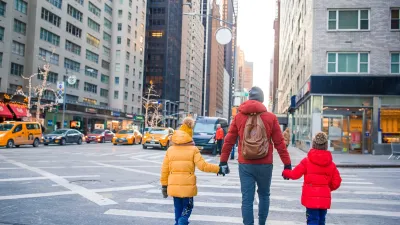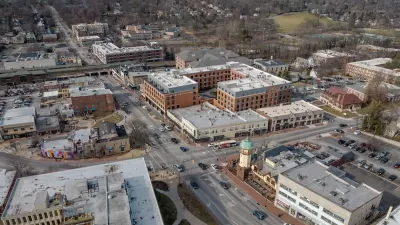American cities are often described as 'segregated,' but segregation is not always well defined. A new study reveals a distinctive pattern: American cities tend to have many small areas of affluence amid fewer, but often larger, areas of poverty.

American cities tend to be segregated by ethnicity and wealth, with wealth usually correlated with white residents and poverty often correlated with minority residents. The spatial distribution of these groups follows a distinctive pattern, according to a new study from the University of Minnesota. Areas of high concentrations of white, wealthy residents tend to outnumber areas of high concentrations of poor, minority residents.
While public policy has typically focused on the problems in areas with high concentrations of poverty, this approach, say the study's authors, ignores another significant urban problem. The dispersion of wealthy, white areas suggests, according to the authors, that white residents are self-segregating and, therefore, denying poor residents chances to integrate socially and economically with more wealthy residents.
Western cities fare better than eastern cities do.
"Cities such as St. Louis, Boston, Baltimore, and Minneapolis have more racially concentrated areas of affluence (RCAAs) than they do racially concentrated areas of poverty (RCAPs). Boston has the most RCAAs of the cities they examined, with 77. St. Louis has 44 RCAAs, and 36 RCAPs. Other cities with a large number of racially concentrated areas of affluence include Philadelphia, with 70, Chicago, with 58, and Minneapolis, with 56."
"There is less self-segregation of metro areas in the West: San Francisco and Houston have just five racially concentrated areas of affluence each, Seattle has nine, Los Angeles, 11. Seattle has just six racially concentrated areas of poverty and San Francisco has 12. These western cities have larger populations of affluent minorities, and are, in general, more diverse."
"Some people argue that when whites and affluent people segregate themselves, it can erode empathy, and it can inhibit the pursuit of region-wide remedies," researcher Ed Goetz told Alana Samuel from The Atlantic. "It can inhibit a sense of shared destiny within a metropolitan area."
FULL STORY: Where the White People Live

Alabama: Trump Terminates Settlements for Black Communities Harmed By Raw Sewage
Trump deemed the landmark civil rights agreement “illegal DEI and environmental justice policy.”

Study: Maui’s Plan to Convert Vacation Rentals to Long-Term Housing Could Cause Nearly $1 Billion Economic Loss
The plan would reduce visitor accommodation by 25% resulting in 1,900 jobs lost.

Planetizen Federal Action Tracker
A weekly monitor of how Trump’s orders and actions are impacting planners and planning in America.

Waymo Gets Permission to Map SF’s Market Street
If allowed to operate on the traffic-restricted street, Waymo’s autonomous taxis would have a leg up over ride-hailing competitors — and counter the city’s efforts to grow bike and pedestrian on the thoroughfare.

Parklet Symposium Highlights the Success of Shared Spaces
Parklets got a boost during the Covid-19 pandemic, when the concept was translated to outdoor dining programs that offered restaurants a lifeline during the shutdown.

Federal Homelessness Agency Places Entire Staff on Leave
The U.S. Interagency Council on Homelessness is the only federal agency dedicated to preventing and ending homelessness.
Urban Design for Planners 1: Software Tools
This six-course series explores essential urban design concepts using open source software and equips planners with the tools they need to participate fully in the urban design process.
Planning for Universal Design
Learn the tools for implementing Universal Design in planning regulations.
Caltrans
Smith Gee Studio
Institute for Housing and Urban Development Studies (IHS)
City of Grandview
Harvard GSD Executive Education
Toledo-Lucas County Plan Commissions
Salt Lake City
NYU Wagner Graduate School of Public Service





























